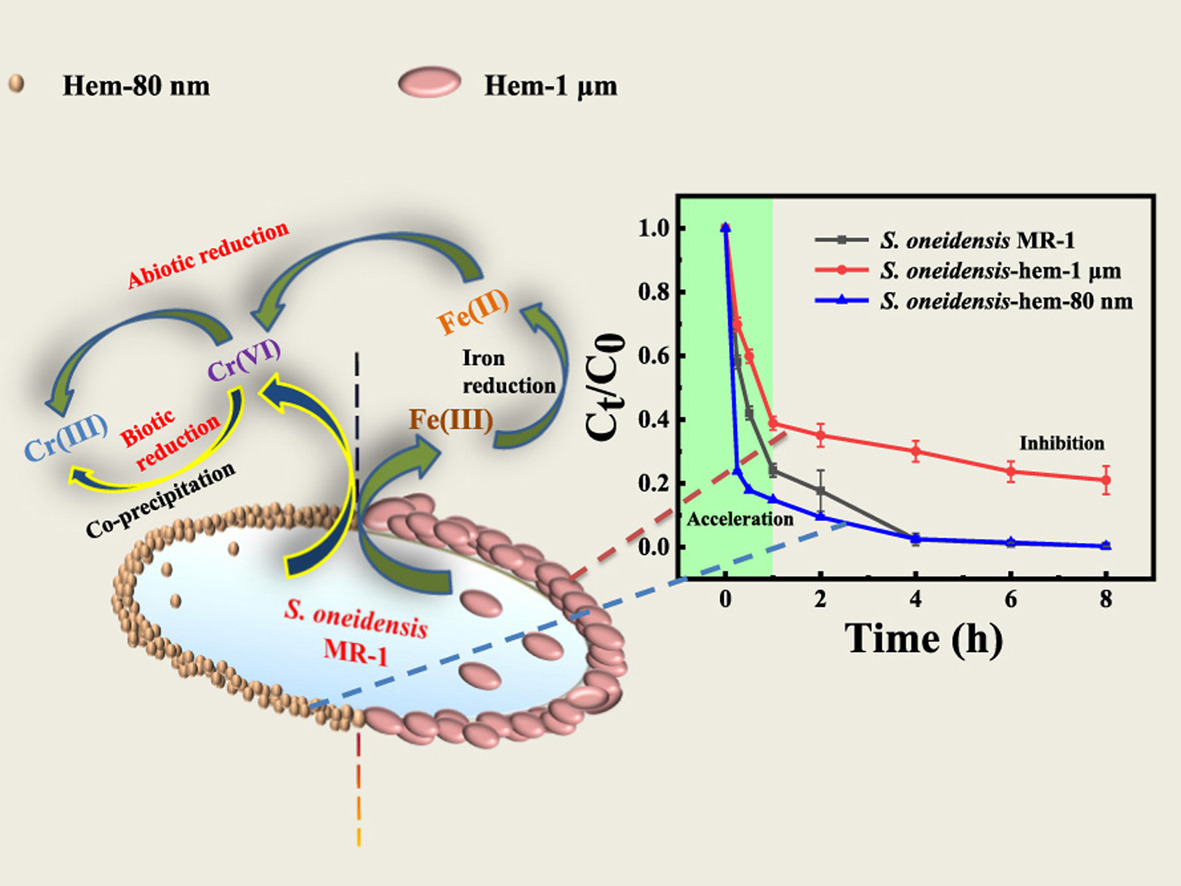Highlights
- •Hem-80 nm accelerated Cr(VI) bio-reduction by S. oneidensis.
- •The Cr(VI) reduction rate was enhanced when the initial pH was higher than ZPC.
- •Hem-1 µm and hem-80 nm promote the normal physiological functions of S. oneidensis.
- •Biogenic produced Fe(II) may take part in the Cr(VI) reduction process.
- •XPS confirmed the FeCr2O4 formation and Fe(II) depletion during the Cr(VI) removal.
Abstract
Microorganisms are commonly bonded to various soil minerals, which may influence the redox processes and bacterial metabolism. However, little is known about the impact of particle size of soil minerals on these redox processes in the subsurface environment. In this study, the Cr(VI) bioreduction by Shewanella oneidensis MR-1 (S. oneidensis) was investigated in the presence of various hematite (α-Fe2O3) particles with average diameters of 1.0 μm (hem-1 μm) and 80.0 nm (hem-80 nm) under different pH conditions. Fourier transformed infrared spectroscopy coupled with two-dimensional correlation spectroscopy (FTIR-2D-COS) analysis and isothermal titration calorimetry (ITC) were used to explore the interaction between S. oneidensis and hematite and monitor the bacterial metabolic activity, respectively. X-ray photoelectron spectroscopy (XPS) was used to elucidate the Cr(VI) removal mechanisms. Our results showed that 78% of chromate can be reduced to Cr(III) by S. oneidensis alone. Whereas, chromate reduction rates were 62% and 85% in the presence of hem-1 μm and hem-80 nm, respectively. The enhancement of Cr(VI) reduction by S. oneidensis-hem-80 nm complex may be due to the large surface area as well as the positive charge of hem-80 nm at neutral pH, which influences the physical contact between S. oneidensis and iron oxides. The microcalorimetric results showed that both hem-1 μm and hem-80 nm promoted the normal physiological functions of S. oneidensis. XPS confirmed the gradual FeCr2O4 formation and Fe(II) depletion during the Cr(VI) reduction process. This work expands our understanding of microbial-mineral interaction and its role in Cr(VI) removal mechanisms in the subsurface environment.
Keywords: Hematite particle size, Shewanella oneidensis MR-1, Cr(VI) reduction, microcalorimetry, 2D-COS studies

全文链接:https://doi.org/10.1016/j.jece.2021.105096